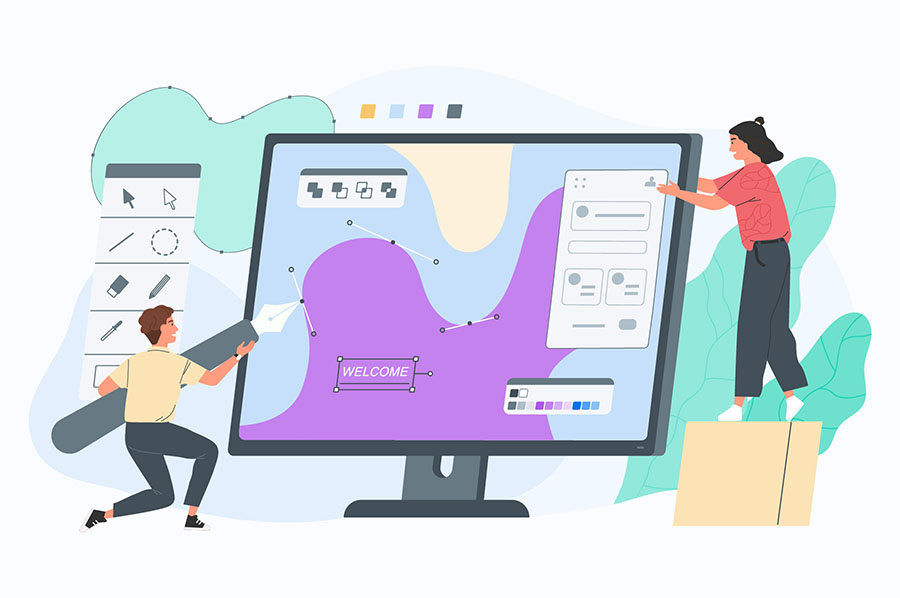
You are about to find out some tips for building a website. These tips will ensure you master your skills. Reaching your goals for web design will be easy with these tips.
Use fixed-position navigation so that users can navigate easily. This means locking the navigation panel when a person scrolls down a single page. Not only is this convenient for your visitor, but it can also help internet marketers by facilitating any action for visitors (e.g purchase a product, subscribe to a newsletter).
A tagline should be shown in full view on your website. This tagline includes a company motto or statement that tells the reader a little bit about the business. You only have about 10 seconds to gain and keep hold of your visitors’ attention from the time they first hit your site.
Pay attention to the colors on your website to make sure they match. It is important to have text that is easy to read on your chosen background color. Reading dark text on lighter backgrounds is simpler than the opposite. Ask someone to look at your color schemes to ensure you are making the right choice.
Don’t make your page sizes any larger than necessary. Users with slower Internet connections may decide that the wait is not worth it if your site is slow to load. You will want your users to have a great overall experience.
Broken Links
Check for broken links before publishing your web page. Error pages can be very frustrating to visitors. Use a program or check links manually to be sure you have no broken links on your site.
There are numerous programs available for purchase to aid you in creating an attractive website. You will be happy with the professional product these programs can produce. Otherwise, people will not be interested in visiting your site.
Simplify your home page. People surfing the web will quickly decide if they are going to delve into a website based on the front page. Describe your business in detail and what it does, but keep other distractions and details to a minimum.
Know what your subject is. If you’re planning to use your website for blogging or something similar, make sure to thoroughly research the subject prior to posting. Providing misleading information to your consumers will only cause them to leave your site. Having a good blog involves having an education on your subject.
Optimize your website to handle computers that may be running older versions of programs like Internet Explorer 7 and 8. Many consumers still depend on IE. They don’t render many elements in compliance with web standards, so workarounds are required. Make sure to look at the infamous “box model bug,” which has been an issue for IE for several years.
Be mindful of what particular file type you use for graphics, since that impacts file sizes and load times for users. Your graphics should normally be GIFs or JPEGs. Although there are a number of advantages to using PNG and BMP files for web graphics, these types of files take up much more disk space. Try converting images files to smaller sizes to make sure everyone that visits your site has a good experience.
Hosting your own website might not be a good choice. As much as is practical, the web design should be your responsibility. But arrange for it to be hosted elsewhere so that you are not tied down into focusing on the website’s security.
While development platforms can ease the coding process, many are not as efficient as a plain old text editor. The idea with these platforms is to design your site’s features, and then paste in their generated code. However, this can lead to errors, so you may prefer coding your site by hand with a text editor.
Get signed up for a design newsletter to stay current on web design trends. This way, if you ever are at a loss for ideas, you will be able to find inspiration through the newsletters. Both pros and novices can benefit from reading good newsletters.
Photoshop is a program that is well-known, and most understand that they must become proficient with it to have the greatest success in web design. Dreamweaver is another option that should be considered when making a choice.
Discuss things with your friends to gather if you missed anything while learning about Photoshop, HTML, or Dreamweaver. You want to ensure that you remember everything you learned. It can slow you down quite a bit if you have to review what you’ve learned while building a website.
Don’t write above the reading level of most of your visitors. If you want everyone to be able to understand your website, use language they can understand. To reach the widest possible audience, your content must be suitable for people at a wide variety of levels.
Have a favicon created for the website you designed. Make you site recognizable in your customer’s favorites list with this small graphic. When looking through their lists of bookmarks, a memorable favicon will make you stand out. Pick a favicon that matches your theme.
Keeping your website’s links working, and up-to-date, is vitally important. This will help to make your site user friendly, and keep your visitors from becoming frustrated. Include link-checking as part of your maintenance routine.
Try to inject some personality into your web design. Find ways to include company logos, testimonials from clients, and any quotes from media. These elements help to make your site appear more authentic. They will make your visitors feel like you are an expert, which in turn brings in more loyal customers.
Web Design
This article should have helped you when it comes to web design. But remember that the information presented here is just a small amount of the available information on the topic of web design. Always look for more information and learn all you can to make it easier to be proficient with web design.